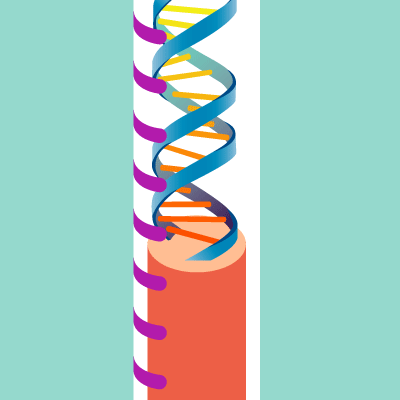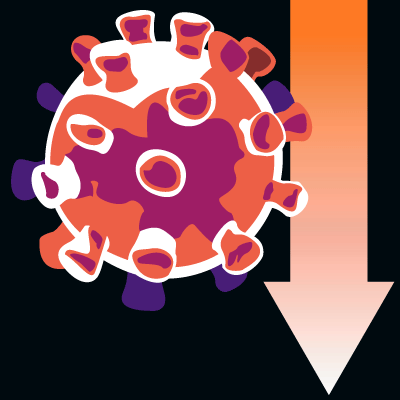On December 31, 2019, 44 cases of pneumonia from an unknown cause were reported in China, possibly associated with one live-animal market in Wuhan, China. An epidemiological study to identify the origin of the pneumonia-like symptoms started at the same time. In the market identified, live animals—including—wild animals, were held in close contact with each other and with humans. Close contact between humans and animals could have caused the viral recombination and emergence of the novel coronavirus. Available evidence at that time suggested that the novel virus was a recombinant of a coronavirus with animal origin that emerged during November or December 2019.
By January 12 the disease agent was determined to be a previously unidentified coronavirus, and its genetic sequence was shared with researchers globally. The first imported case, in Thailand, was identified the next day and it has since spread to 16 other countries. Table 1 shows the total confirmed case counts as of January 30, 2020. Figure 1 shows the trend of reported cases in Mainland China since January 16, 2020.
| Countries Affected | Cases | Deaths | |
|---|---|---|---|
| China (mainland) | 8124 | 171 | |
| Thailand | 14 | ||
| Japan | 11 | ||
| Hong Kong | 10 | ||
| Singapore | 10 | ||
| Taiwan | 9 | ||
| Australia | 9 | ||
| Malaysia | 8 | ||
| Macau | 7 | ||
| France | 5 | ||
| USA | 5 | ||
| South Korea | 4 | ||
| Canada | 3 | ||
| Vietnam | 2 | ||
| Nepal | 1 | ||
| Cambodia | 1 | ||
| Sri Lanka | 1 | ||
| Finland | 1 | ||
| Sri Lanka | 1 | ||
| Philippines | 1 | ||
| TOTAL | 8235 | 171 |
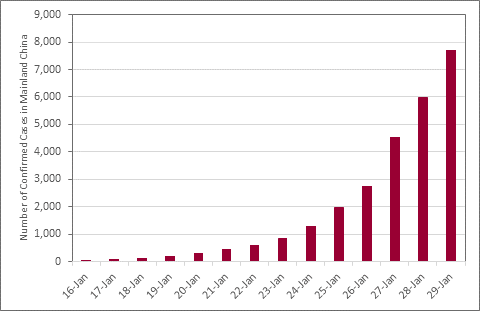
What Is Coronavirus?
Coronaviruses are a large family of respiratory viruses responsible for primarily upper-respiratory and gastrointestinal infections in a wide variety of animals (felines, mammals, birds, etc.). Several strains of coronavirus cause human disease, including Sudden Acute Respiratory Syndrome (SARS), Middle East Respiratory Syndrome (MERS), and a few others.
Coronaviruses are usually spread through coughing and by contact with infected persons or infected surfaces. Covering a cough and frequent hand washing are important preventive measures for this outbreak, similar to flu precautions. Symptomatic patients have a fever, cough, body aches and headaches and in severe cases can develop viral pneumonia.
There is no effective treatment for an infection yet; antibiotics do not affect viruses and the antiviral products available today do not affect this coronavirus. Since there is currently no effective vaccine or treatment available to contain the spread, officials in China implemented nonpharmaceutical containment measures, including travel restrictions to and from the epicenter of the outbreak at Wuhan and more than a dozen other cities in China. These measures impact a combined population of more than 40 million people. Furthermore, other countries are putting extra screening and mandatory quarantine measures into effect for passengers who are traveling from China to prevent the importation of the coronavirus.
How May the Outbreak Develop?
For the rest of this blog post we’ll investigate the estimated transmissibility of the novel coronavirus based on the historical data, pathogen characteristics, and available evidence about the current outbreak as of January 29, 2020. Please note that some pathogen characteristics may remain similar over the period of the outbreaks; however, some projections may change in terms of changes in the implemented interventions.
One of the key pieces of information about an outbreak is the R0—a mathematical term pronounced “R naught” that indicates how contagious an infectious disease is, also referred to as the basic reproduction number—which shows how many secondary cases, or secondary people getting infected, may result from an infected individual during the course of the disease in a totally susceptible population.
To understand the transmission dynamics of the spread, it is important to be clear about the transmissibility of the pathogen. Based on the pattern of the disease spread and its original location, AIR estimated the range of the basic reproduction number to have a mean of 3.2 (Figure 2). The relatively high R0 value of this outbreak explains the high growth rate of cases we are observing.
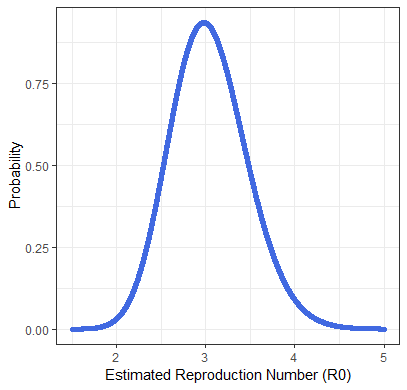
Estimated Cases
By selecting a similar stochastic event from the catalog of The AIR Pandemic Model—matching the start location and the pattern of the spread, as well as the pathogen characteristics—we estimated the number of cases, taking underreporting into account (Figure 3).
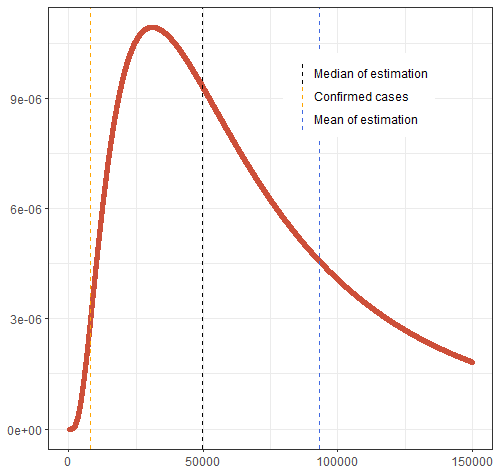
Using the AIR Pandemic Model’s novel metapopulation Susceptible-Exposed-Infectious-Removed (SEIR) epidemiological model, which explicitly accounts for both long- and short-range population movement such as air travel and work commute, respectively, we further projected the number of likely cases for the next two weeks. Figure 4 shows the number of cases current on Day 56 of the outbreak and the range of projected cases for the next two weeks. The decision to estimate the start of the outbreak at the beginning of December was made based on the published reports on the symptomatic cases during early December.
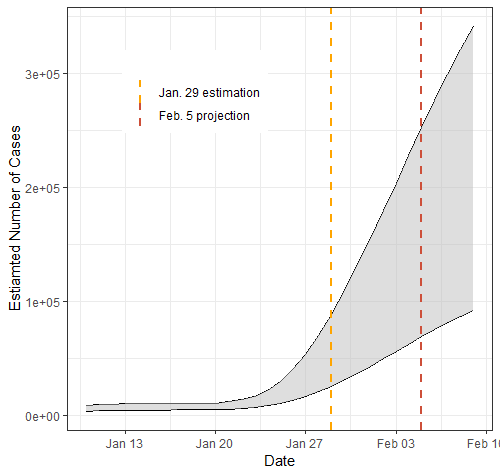
Case Fatality
So far, mortality associated with the 2019 novel coronavirus is observed particularly among people who are older than 60 years of age, with the mean value of 73 years of age. Furthermore, the case fatality is more prevalent among people who have pre-existing conditions, including, but not limited to, diabetes, hypertension, or a history of cancer. The current case fatality ratio among reported cases is about 2.3%, but this value may change as the outbreak progresses.
Learn about Verisk's life insurance solutions

